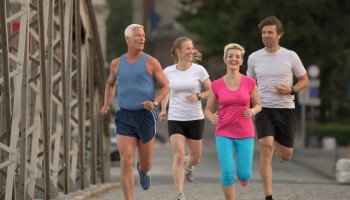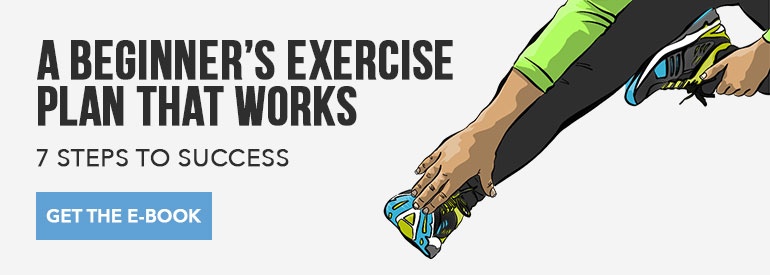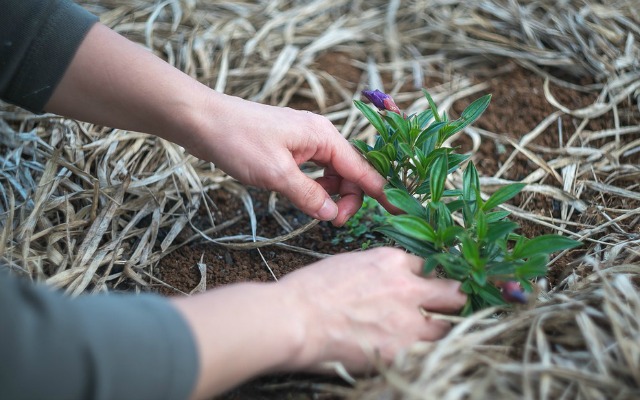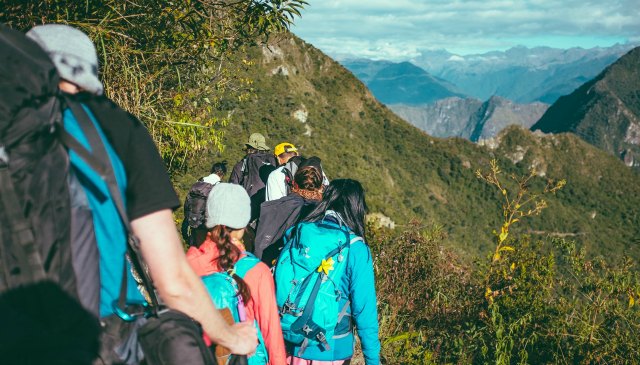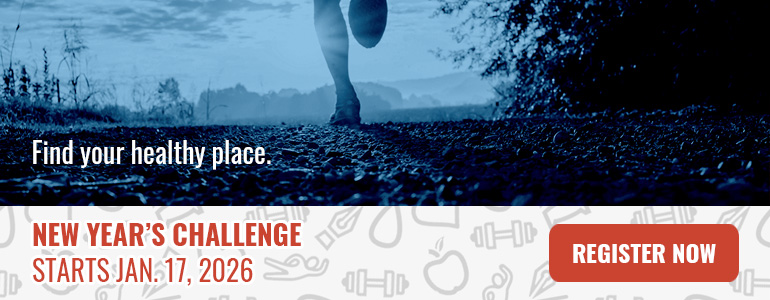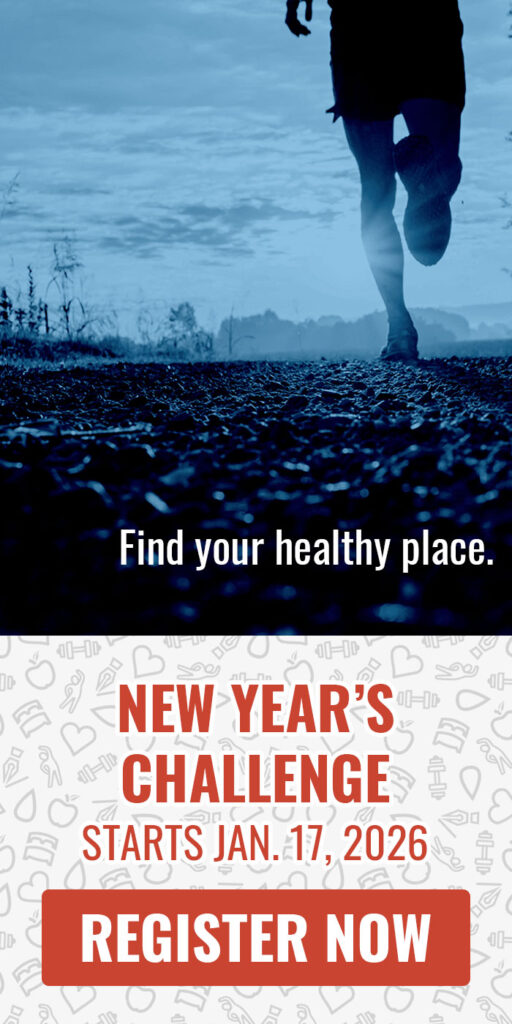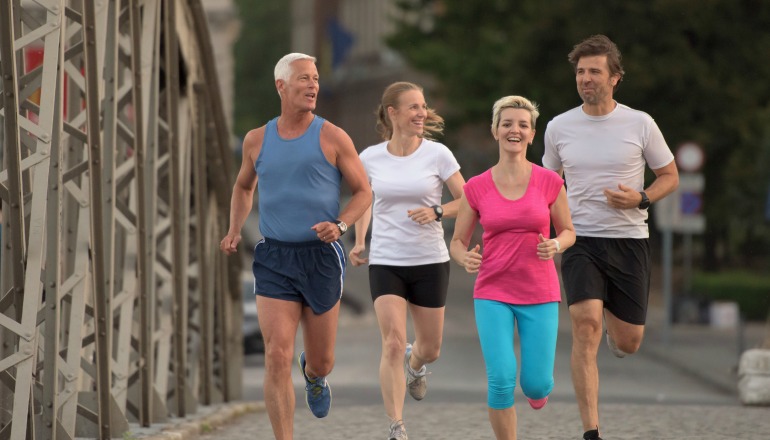 Reading Time: 6 minutes
Reading Time: 6 minutesLet’s take some time to discuss something that should be on everyone’s radar: osteoporosis.
Osteoporosis an invisible condition, affecting millions. Those who live with it usually don’t notice a problem until something acute happens — like breaking a wrist during an ordinary slip and fall. Obviously, at that point, it’s easy to realize that life changes are in order.
But it’s possible to possible to prevent that day from happening. It’s possible to strengthen your bones right now.
Who Can Get Osteoporosis? We All Can
Osteoporosis affects women and, eventually, men. Small, thin women are especially prone to bone loss, as are those of European and Asian descent.
But bone growth slows down in all of us given that our sex hormone levels drop off naturally as we age. Research has shown that the presence of sex hormones keeps our body from dismantling our bones and reabsorbing the minerals.
In addition, if we smoke, it not only raises the risk of bone loss and the rate of bone fractures, but it also slows down the body’s ability to heal from those fractures.
If this all sounds rather sobering, we can take heart in the body’s remarkable capacity to rebuild bone tissue. The keys? Eat a diet rich in plant-based calcium (go, kale!), enjoy the sunlight, and…exercise!
How to Prevent Bone Loss with Exercise
Your bones are made of living tissue that replenishes itself all the time. But after around age thirty, that replenishment slows down, and it could really use your help. A health-conscious lifestyle that includes movement may be able to prevent a need for medication. And it’s never too late (or early) to start. Exercise can offer substantial bone benefits at any stage of life.
Even if your schedule won’t allow for big changes now, you can take ten minutes a day to be mindful of movement and create habits that will genuinely do your body good. You might be surprised to learn how much bone building you already do daily, and how simple it can be to augment it. For example, did you know that working in your garden or cutting grass are bone-strengthening exercises?
The National Osteoporosis Foundation calls two kinds of exercise vital for increasing and sustaining bone density. These are the exercises that challenge your bones and muscles together. They are:
- Weight-bearing exercises, either low-impact or high-impact movement in which you press against gravity in an upright position
- Muscle-strengthening exercise
So, let’s take a look at these different bone-building workouts. While there are two categories of exercise, there are actually three options you can choose from when you factor in the high-impact and low-impact variables.
As you explore these options, be thinking of which one suits you best. Then, set time aside to follow through.
1. High-Impact, Weight-Bearing Exercise: Climbing and Hiking
“High-impact, weight-bearing exercise” can be simpler than it sounds. Do you have access to a stairwell? Boom. If you can briskly go up and down 100 steps five times, you’ll have an excellent workout with both aerobic and bone-building aspects.
Hiking is a popular, high-impact exercise strategy. Visit Meetup.com. Search for hiking and your location and look for a group that welcomes beginners. Join up, and you’ll be setting the stage for better bone density readings, acquiring a great overall health habit, and making new friends — all at once.
For best bone-building results, keep at it, and work up to those hilly hikes. Invest in a pair of trekking poles (Leki and Black Diamond are excellent brands) to keep your balance and allocate some of the resistance work to your upper body. For extra spine strengthening, wear a backpack, carrying increasingly heavy weight inside.
P.S Hiking has many other benefits brought to you by the great outdoors. A Stanford-based study found that nature walks can prevent depression and support your mental well-being.
2. Low-Impact Yet Powerful: A Good Walk
If you have fallen and suffered a break on account of lowered bone density, or believe this is likely to happen, you might not be comfortable with high-impact exercises. Ask your doctor or your physical therapist to recommend an appropriate, low-impact workout for you.
Perhaps you already do yoga or Pilates — popular exercises for strength and flexibility — but some positions can pose risks. Bending forward puts pressure on the spine. Abdominal crunches, toe touches, and other forward-bending moves are best avoided.
There is a simple alternative — walk!
Consider this, from the renowned Nurses’ Health Study, which tested thousands of women throughout their lives. Postmenopausal women who walked at least eight hours weekly (or did the equivalent in another activity) obtained the same level of protection against fractures as they would have gotten from hormone therapy. At the same time, they reduced their risk of diabetes, stroke, and heart attacks. Wow!
The key to making this sort of bone-building strategy work is making time for you. Put your daily walks into your daily planner. Don’t think of it as a chore. Walking to the train station instead of driving, for example, could simply become part of your daily commute. Moving upright and quickly is what Homo sapiens are meant to do, and what your bones and muscles crave. Look for the simple ways to incorporate it.
3. Muscle-Building Workouts: Give Yourself a Lift!
Bones respond especially well to forceful muscle movement, bursts of action, and variety in the direction of your moves. Are you a tennis player? Fantastic! Love to dance? Dance!
And if you feel good when you lift weights, you have the opportunity to create a lifetime habit that will regularly stimulate bone growth. Muscle-strengthening exercise is exemplified by weight lifting.
But here again, a gym is not required. Perfectly effective bodyweight lifts can be done at home or in the office. For example, you can strengthen your body’s core and several muscle groups with prisoner squats. Watch the video below, and then try it yourself. Repeat, until you can do 10 squats in a row. Then work on building up to additional sets.
Note: If you find yourself nervous or wobbly at first, try squatting down to a chair or bench to alleviate any concerns about falling. As you get stronger, you can use lower and lower targets, and then eliminate that aid altogether.
You Can Prevent Bone Loss by Being Proactive
At some point in your life, you’re likely to have a bone mineral density test, or DEXA scan, to check for osteoporosis. If you receive an undesirable diagnosis, know that this same test, taken again in another year, can also tell you if you’re replenishing bone tissue.
Why is it so important for you to monitor and take control of this factor in your health?
Because a compression fracture — partial crushing of a vertebra — is so common as we get older. In fact, by the age of eighty, four in ten women will suffer this back injury, often while doing something completely normal, like moving a household object. Compression fractures can be painful, or they can go undetected, just slowly shrinking the spine over time.
Can we agree that they’re something we’d like to do everything in our power to prevent?
What you can do starting today to prevent osteoporosis:
- Write your bone-building plan into your schedule.
- Keep up a conversation with your doctor about what kind of exercise you do.
- Include social exercise — hiking, dancing, or high-impact aerobics are all great group activities, and most of us are safer and better motivated when exercising with buddies.
- Take up weight-bearing and muscle-building exercises.
- Start walking daily.
- If it’s the right time of year, get into the garden — all that up and down and crawling will do wonders for your bones and muscles.
- As you get stronger, add some higher-impact movement, such as jogging, into your weekly planner.
In short, celebrate your body’s natural love of movement to rebuild your bones — and your whole self. You’ve got a lot of years left in you, and you want to make sure you enjoy every single one of them.
